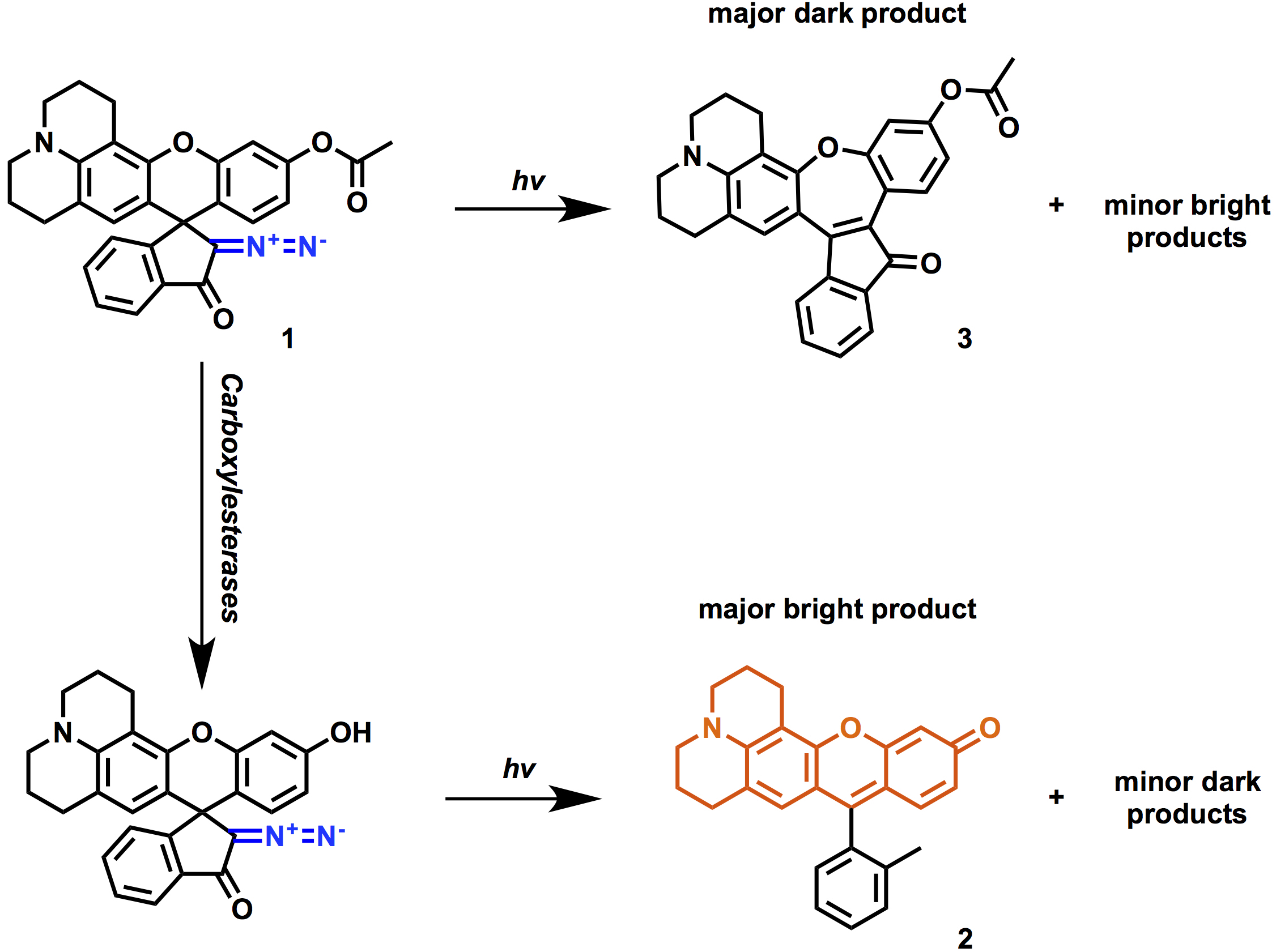Development of an Esterase-Targeted, Cell-Trappable and Photoactivatable Diazoindanone Rhodol for Live Cell Imaging and Stochastic Optical Reconstruction Microscopy
In this study, we discuss the photochemical properties and applications of a double-activatable fluorophore 1, which is based on a previously reported scaffold.[1] Upon enzymatic deacetylation and subsequent irradiation with 405 nm laser, 1 yields a major fluorescent photoproduct 2. In the absence of the preceding enzymatic deacetylation, however, mostly non-fluorescent compound 3 is obtained. A bright signal can thus only be attained after photoactivation of 1 in the presence of intracellular carboxylesterases. Moreover, under constant light irradiation, we expect fast photoconversion of 1 immediately after deacetylation. This mechanism is useful for in situ mapping of enzymatic reactions and tracking of carboxylesterases with stochastic optical reconstruction microscopy (STORM). In this talk, we will furthermore discuss the development of a steady state technique for STORM that allows acquisition of a large number of images without intensity decay, by constantly replenishing the intracellular reserves of 1. With this novel technique, we aim to obtain higher labeling densities and record super-resolution time-lapse sequences of slow cellular processes.

[1] V. N. Belov, C. A. Wurm, V. P. Boyarskiy, S. Jakobs, S. W. Hell, Angew. Chem. Int. Ed. 2010, 49, 3520–3523.